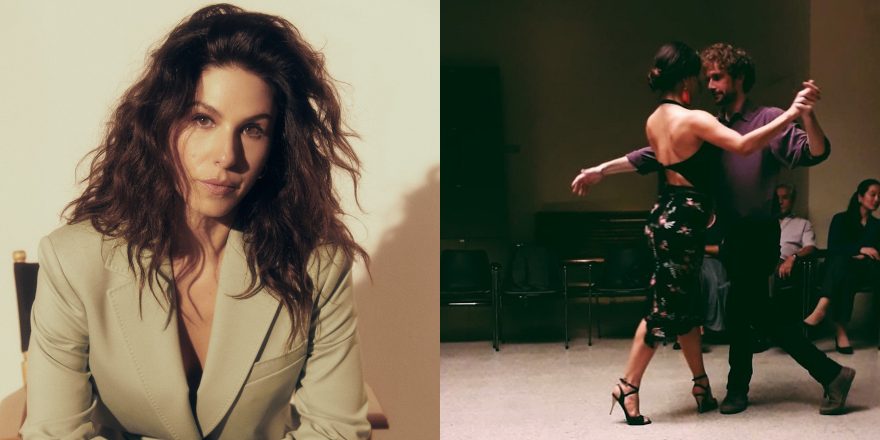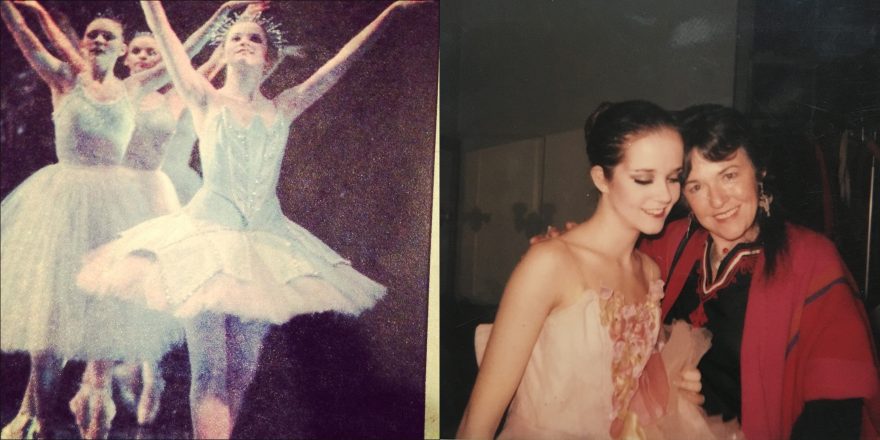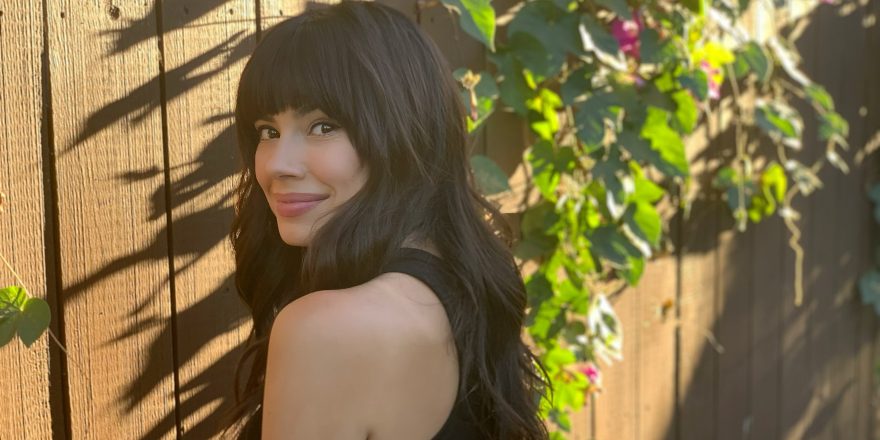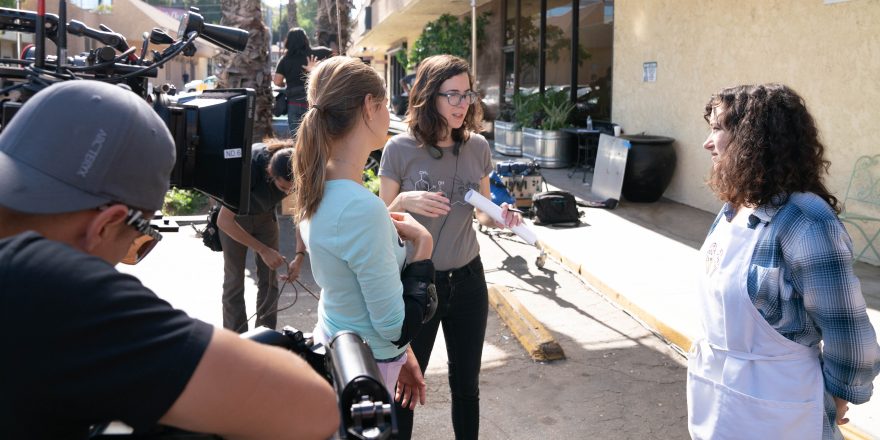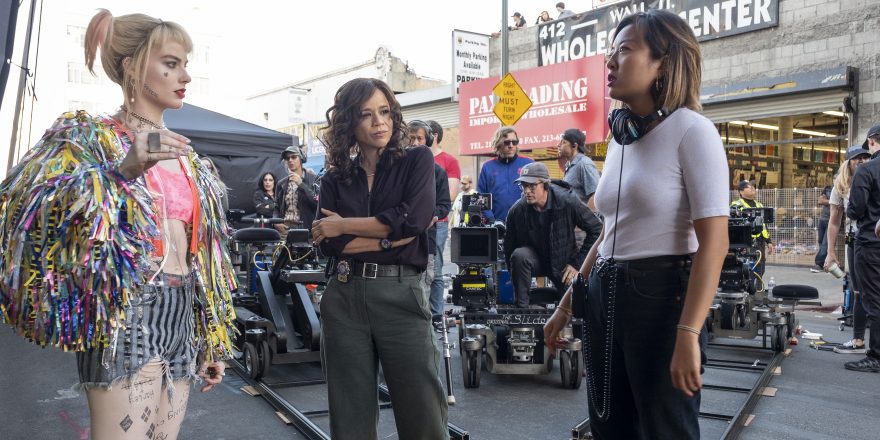“Tap, tap, tap … and cut.” The camera was set up behind me, as I sat in a chair. The shot was a close-up of the back of my feet, strapped in heels, tapping to the beat of tango music. The room was full of happy dancers, cast and crew, sweating as much as I was, watching me in silence as the director called cut. Sweat dripped down my arms as tears uncontrollably poured down my face – I had just gotten off the phone with my agent, who had told me what the director was just about to find out. We were being shut down, mid production, and getting sent home. It was March 16, 2020, and the whole world was on the brink of a pandemic.
Since I was six years old, I knew I wanted to act. As I got older, people always asked me what my dream role would be. That’s a hard one. But my answer always was, “A role that would require me to learn a new skill and to travel, in a project that had an important story that needed to be told.”
Cut to November 2019, and I get the script for an indie film called Ariel, a film about a brother and sister who discover tango in Argentina, while uncovering their own history in the country’s troubled past. For this film, based on true events, I’d have to learn the Argentine tango and go to Buenos Aires to shoot the movie. And there it was – my dream role.
The next few months were full of tango lessons. I dove deep into the passionate world of Argentine tango. My knowledge of tango previous to this was ballroom tango – the stuff you see on Dancing with the Stars, the stereotype of dancers looking angry, with movements that were sharp and dramatic, sometimes topped off with a long-stemmed rose in the mouth. Quite the opposite from what I have come to know as Argentine tango – which I can really describe best as a sort of shared meditation, with a stranger, to beautiful music, while keeping form in an abrazo: a hug. I won’t say too much here about its deep history, but it was born of people living in the poorest areas, from sex workers to overworked service people, who had little joys in life other than to unleash their stress and troubles and get lost in dance. It was danced in the streets, and I can only imagine how I would feel watching that scene right now. It gives me chills.
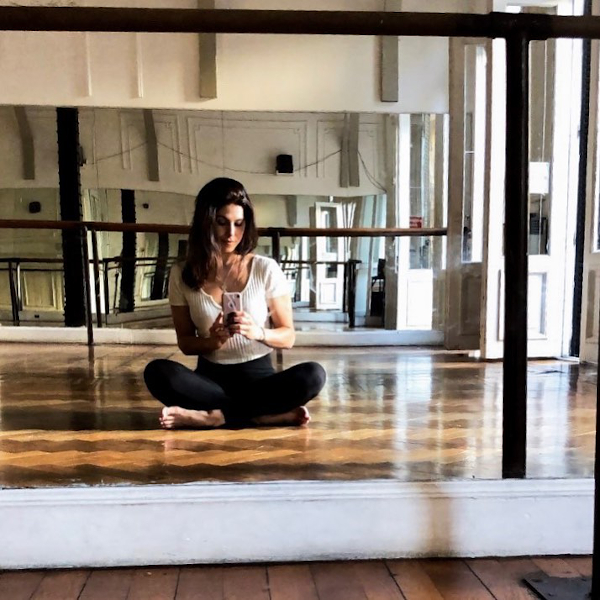
Diana Vega, my character in the film, and her brother David Vega, were inspired by real people. “Would you two be interested in meeting some of the people who lived through what your character’s story is about?” asked our incredible writer-director-producer/tango world champion Alison Murray. Raphael Grosz-Harvey, my co-star, and I jumped at the chance. We had done some research and sort of grasped what had gone on in Argentina.
[Trigger warning: brutality.]
In 1976, a right-wing coup overthrew Isabel Perón as President of Argentina. A military regime, la junta, took over. The people protested. They were being stripped of their jobs, their homes, their ability to feed their families, their lives. According to a 2016 article on the coup, “Human rights activists state that in the aftermath of the coup and ensuing Dirty War, some 30,000 people, primarily young opponents of the military regime, were ‘disappeared’ or killed. Military men responsible for the killings often spared pregnant women for a time, keeping them in custody until they gave birth, before killing them and giving their infants to childless military families.”
We sat in a beautiful old school cafe in Buenos Aires, listening to a woman recount the story of finally finding her long-lost brother, one of the desaparecidos. Raphael and I sat there with our script supervisor Lucia, who also helped us with translating, as we choked back tears listening to this woman recount her story.
We had two weeks of rehearsals, working scenes with Alison at her beautiful home in San Telmo, while her husband Carlos prepared the most incredible grilled meats in his parrilla – an Argentinian barbecue. We swam in the pool as we drank wine and discussed scenes and the emotional journeys of our characters. Carlos was also our tango instructor. We spent every morning at a beautiful, non-air-conditioned dance studio learning the art of tango while we sipped maté.
It all felt like a dream. I was inspired.
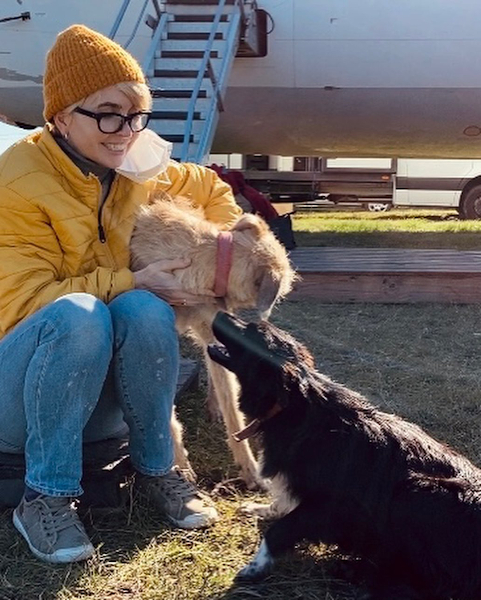
“Cris, are you watching the news down there? Can you please come home?” My cousin Lara, my partner Greyston, my dad, my brother, my friends, my nonna … everyone seemed to be worrying about me as the pandemic came onto their radar. “I’m fine, guys, there are no cases here and it’s not a big deal – I’m sure it will blow over.” Willful ignorance? Avoidance? Desperate attempt to ignore current events? Yes, yes, and yes.
Next thing I knew, I was watching videos of Maurizio Marchini singing “Nessun Dorma” from his balcony in Florence during lockdown. Headlines of the number of casualties sent me into panic attacks. Terror-filled group chats with my family and friends in Italy brought me to tears. The fear in everyone’s voices over the phone, asking when I was coming home, made my stomach churn.
The Argentinian producers, Pamela Delgado and Felicitas Raffo, called a meeting. They were trying to figure out what to do, how to navigate the ever-changing news, check on us all and see how we were feeling. No more sharing maté for now, OK? Sure. Only catering would handle the food from now on. No problem. Hand sanitizer available everywhere. Done. New cast and extras wouldn’t be allowed to come to work if they had recently travelled. We would play it by ear and do what we could to keep everyone safe.
The scene: a milonga. A hot room filled with extras, dancers, cast and crew. It was Monday and I was in a tight pink dress, hair pulled back, red lips and high heels. I spent the day juggling worried texts and phone calls from loved ones and dancing – in el abrazo – with new people for the scene. We tried as much as we could not to breathe on each other as we danced, cheek to cheek, in a crowded room.
The crew was setting up the last scene of the day as I went outside to take a phone call from my long-time agent Sandy Martinez: “OK, the production has been shut down. We could only get you on a flight on Thursday, but it’s done for now. You’re coming home.”
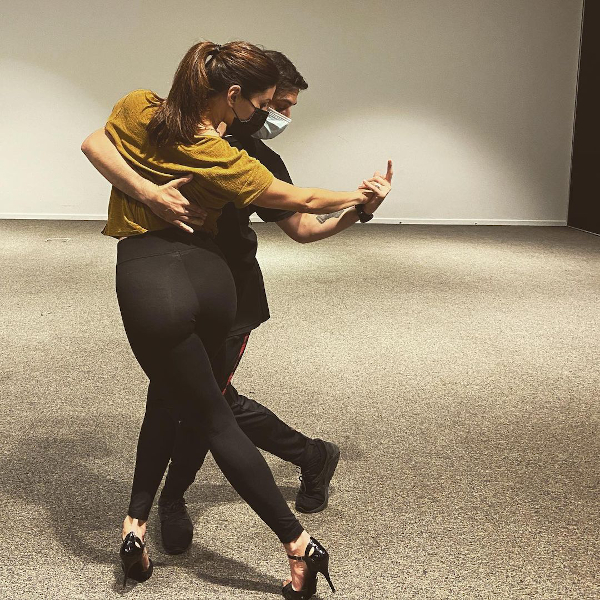
I listened in shock. We still had half the movie to shoot. I was so torn. I’ve never wanted to go home so badly, but I also wanted nothing more than to finish this film. As I walked back onto set, it was clear the news hadn’t been shared with the crew yet. Ana Berard, one of the most amazing first ADs I’ve ever worked with, saw my face and knew what I had just been told. She said we would be finishing this last shot and then telling everyone the news.
Camera set. “Cristina, can you come sit, please? This shot is just of the back of your feet, tapping to the beat of the music,” Alison said.
I cried my heart out while I tapped my feet. Confused extras thought I was just really into the scene. “Wow, she’s so committed,” they told Raphael. He knew. They called cut. I wept as the news broke to the cast and crew.
We collectively lived the following year as something that was simultaneously terrifying and sad and crazy and new and overwhelming. I spoke with Alison many times during this period. She couldn’t bring herself to even watch the dailies – it was too painful to have something she had spent so many years pouring her heart into, now hanging in the balance.
No one knew what would happen, whether we could go back to finish it or not. There were a few times where it seemed it might happen, but then a new wave of COVID-19 would come.
In April 2021, I got a call from Alison: “Hi! So, please tell me you’re available May and June; we’re going to finish the film in Uruguay. The situation is safer and we can find the right locations. The logistics might be a challenge but we can figure it out …”
I cried. I couldn’t believe it. I hadn’t even looked at my marked-up script in more than a year. This role had taught me so much, changed me and introduced me to a new passion for dance. We had to finish it.
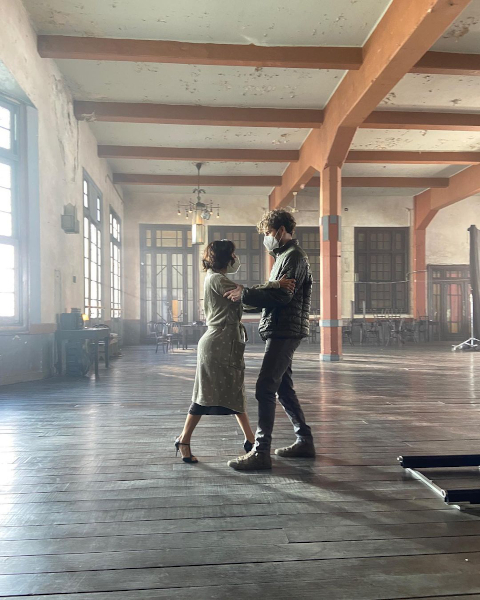
And we did. It was many long flights to get from my home in Salt Spring Island, British Columbia, to Montevideo, Uruguay. I felt so anxious traveling again. One week of quarantine. PCR tests every other day and strict protocols in place on set. We were all extremely cautious and very wary of getting shut down again – which surely would have been the end of the project, had it happened. We worked six-day weeks and spent our downtime in our hotel rooms: a stark contrast to the previous year which was filled with asados, milongas and epic rehearsals.
It was one of the most insane experiences of my life. I don’t know what the future will be for this film, but the thought of finishing it kept me going so many times during the pandemic. I found a new community in tango that I love, and it inspires me every day.
One thing is for sure: this year, more than ever, I have found much-needed solace, happiness and moments of normalcy in dance, films, TV shows, paintings, books, online theatre, music. I have found what I needed in art when the world felt like it was ending.
“Tap, tap, tap … and cut.” Needless to say, I’m thrilled that shooting a close-up of the back of my feet wasn’t my last time on a film set.


